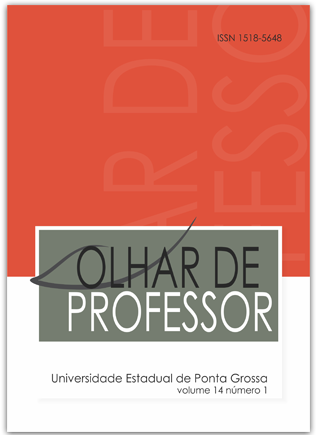We also have a voice: dynamics and movements in analysis
Main Article Content
Abstract
This article is based on fi eldwork carried out during research conducted in a public school in Lisbon. Cinema is used as a medium for refl ection on violence, citizenship and youth. First of all, the article tries to understand through some fi lms the movement that happens when fictional cinema attempts, through the theme of the reality of poor, excluded children and young people, to bring the lives of these young people to the screen and secondly, the view that young people have of these fi lms and how to use cinema as a medium by which they might feel stimulated to externalize what they think, feel and see. In order to see through the eyes of young people an ethnographic research was developed for six months and used as the "fi eld of study" a secondary school situated within the urban area of Lisbon. The aim of this research was to understand how young people see themselves and how they think they are seen by society (which includes the cinema, the media, etc.) of which they are a part. The author used a research notebook diary depicting daily life at the school as a research tool. The philosophy of this field work is based on the dialectical pedagogy of Paulo Freire. Using problematizing dialogue, mainly developed after the showing of films and during classes and meetings, questioning and problematization was encouraged; and through questions opinions and ideas a video was produced. Utilizing education 'for', 'with' and 'about' the media concepts of communication, education and participation were used, working with issues related to the daily lives of these young people. The fi nal product of this project was a documentary, in which the students were involved in all stages of execution, from pre-production to completion.
Downloads
Article Details
Authors who publish in this journal agree with the following terms:
a) Authors keep the copyrights and concede the right of its first publication to the magazine. The work piece must be simultaneously licensed on the Creative Commons Attribution License which allows the paper sharing, and preserves both the author identity and the right of first publication to this magazine.
b) Authors are authorized to assume additional contracts separately, to not-exclusively distribution of the paper version published in this magazine (e.g.: publish in institutional repository or as a book chapter), with the author identity recognition and its first publication in this magazine.
c) Authors are permitted and stimulated to publish and distribute their papers online (e.g.: in institutional repository or on their personal webpage), considering it can generate productive alterations, as well as increase the impact and the quotations of the published paper.
d) This journal provides public access to all its content, as this allows a greater visibility and reach of published articles and reviews. For more information on this approach, visit the Public Knowledge Project, a project that developed this system to improve the academic and public quality of the research, distributing OJS as well as other software to support the publication system of public access to academic sources.
e) The names and e-mail addresses on this site will be used exclusively for the purposes of the journal and are not available for other purposes.

This work is licensed under a Creative Commons Attribution 4.0 International License.






